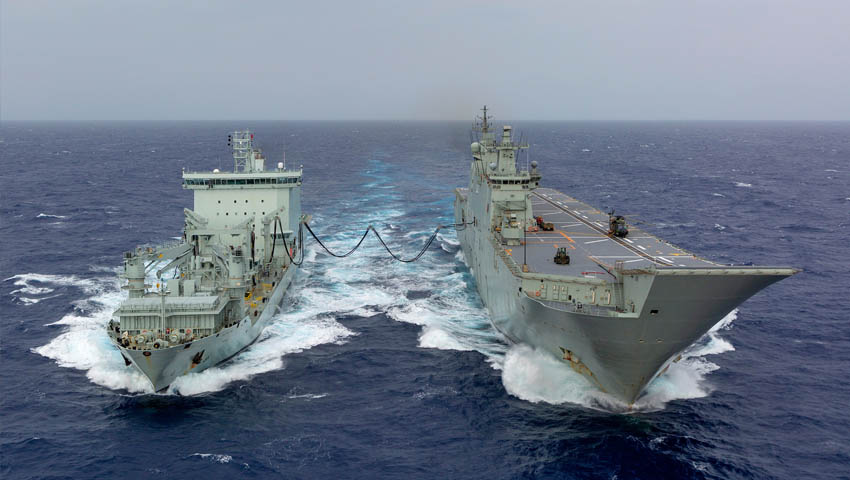Defence scientist Jenny Mathew has completed a prize-winning study of the Royal Australian Navy Canberra Class Landing Helicopter Dock resupply operation.
To continue reading the rest of this article, please log in.
Create free account to get unlimited news articles and more!
With a push in recent years for RAN vessels to remain in task groups and in operations at sea for extended durations, replenishment at sea (of fuel and to a lesser extent solid goods, and even personnel by a flying fox type set up between ships) is a regular occurrence. It is also one of the most dangerous activities undertaken by navies during peace time, which is why the RAN needs to know all it can about the activity and how to make it safer.
Apart from replenishing its own vessels, the RAN also conducts operations with other navies that have vessels that need replenishing at sea, and our RAN vessels need to be replenished by allied navies. The comprehensive study used models to find out exactly what hydrodynamic interactions take place.
Replenishment takes place at speeds of 12-14 knots, with the vessels in close proximity. When large platforms like these move within 40-60 metres of each other, the motion of one creates waves that impact on the other, and vice versa.
Mathew led the recent range of experiments at the Australian Maritime College (AMC) supporting the RAN’s Landing Helicopter Dock (LHD) platform, specifically understanding the forces at play during LHD replenishment at sea. After her findings were published in the journal of the UK-based Royal Institute of Naval Architects (RINA), Mathew and her AMC co-authors received the RINA Wakeham Prize for top RINA paper in 2018 by scientists under the age of 35.
Mathew is a member of the DST team charged with analysing ship stability, sea-keeping and operational loads to support the RAN. Much of her team’s research takes place at the AMC, using scale models of RAN vessels in specialised facilities including the Towing Tank and Model Test Basin.
"That impact is dependent on speed, size, shape and displacement of the vessels. The supply vessel is shorter than the LHD by approximately 17 per cent, but it displaces almost 16 per cent more than the LHD. During replenishment, both vessels’ displacements change, as one ship gets heavier and the other lighter. That change is significant, as the vessels take on quite different hull shapes in the water," Mathew explained.
The paper presents the analysis of the influence of the separations between vessels on the motions of the vessels, examining the influence of latitudinal and longitudinal separation between the vessels and recorded some really good validation data for computer models.
The study was conducted in the model test basin in order to accommodate the two vessels side by side for the simulated replenishment operation. DST funded the construction of a new rig for the experiment. The model test basin environment including the two vessels under trial conditions can be seen behind Mathew in the image above.
Analysis of the trial data indicates that the motions of the supply vessel were generally larger than the LHD. It was found that hydrodynamic interactions can lead to large supply vessel roll motions in head seas, and Mathew and co-authors suggested directions for future research.

 Login
Login







